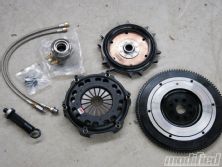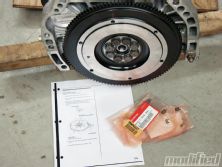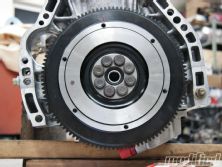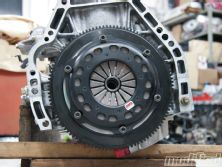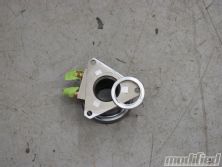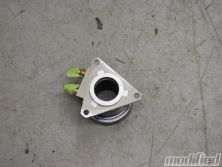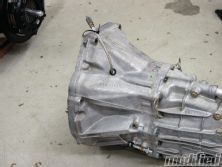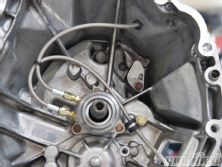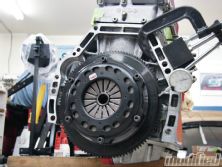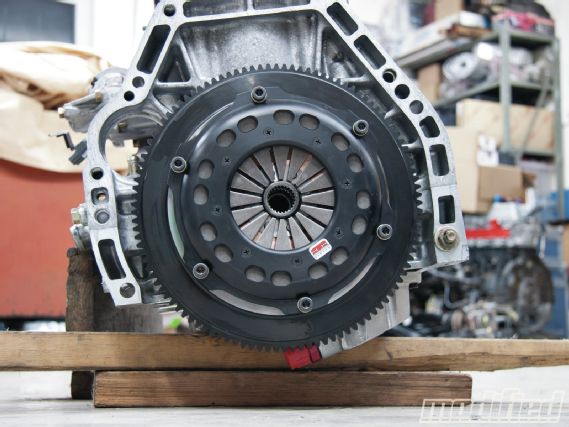 | 2000 Honda S2000 - The Right Clamping Force
| 2000 Honda S2000 - The Right Clamping Force
There are multiple scenarios in which an upgraded clutch is warranted: If you’re exceeding the holding capacity of your current one, if you want increased engine response and easier heel/toe downshifts, and if you are looking to remove weight from the vehicle. Possible reasons not to upgrade can include difficult modulation (think riding the clutch) and reduced driveability, increased noise, and increased clutch pedal effort. For our race application, all the reasons to upgrade are valid and none of the potential downsides is really of concern. After all, time attack competition doesn’t require standing starts, and around-town driveability doesn’t help lower lap times.
When shopping for our S2000 clutch package, low inertia coupled with the necessary torque capacity to prevent slip were top of the list. The best way to achieve this is with the use of multiple clutch discs. By increasing the number of discs it is possible to reduce their diameter while maintaining the desired torque capacity. The reduced diameter lowers the inertia, providing improved engine response, while the ability to complete heel/toe downshifts is quicker and with less throttle input.
We opted to use Competition Clutch’s twin-disc race clutch. It’s a bolt-on solution for the S2000 and comes complete with a lightweight, 4130 alloy-steel flywheel, twin unsprung cerametallic discs, and a lightweight 7.25-inch aluminum pressure plate. It also features a hydraulic release bearing that replaces the factory clutch fork and slave cylinder. Hydraulic release bearings are common fare in most purpose-built race cars and make for easier gearbox removal and installation.
During installation we found a few things that may make your life easier if trying to fit a Competition Clutch twin disc to your S2000. First, make sure to fully clean all friction surfaces, including the flywheel, with a high-quality brake cleaner; I like the Wurth stuff because it has no chlorine in it. I used all-new OEM Honda hardware with red Loctite torqued to factory spec to secure the flywheel. I always recommend using new hardware for something as critical as a flywheel. A dial gauge was then used to check the radial runout on the flywheel, which was excellent at less than 0.001 inch. Next, when fitting the pressure plate, be sure to very carefully tighten the hardware in a cross pattern to achieve even clamp load. Use blue Loctite here. Be especially careful that the edges of the pressure plate don’t hang up on the flywheel. Use a feeler gauge under the pressure plate edges to make sure it is fully seated against the flywheel. Our hydraulic release bearing came with locating tabs designed to center the bearing assembly on the outer diameter of a casting feature in the box. However, this is not a machined surface, and one of the tabs interfered with part of the casting. The inner bore is, though, and it’s what the original clutch tube centered on. Removing the locating tabs on the Competition Clutch release bearing and machining a ring to locate the hydraulic release bearing to the factory machined inner diameter did the trick to ensure the bearing assembly is dead center to the input shaft.
Finally, while it’s possible to route the release bearing hydraulic feed line and bleed line through the factory side port in the casing, it creates a high point in the lines that can make bleeding the air out of the system difficult. Consequently I took the opportunity to drill the gearbox casing while it was off the car and route the bleed line straight up and in to the engine bay for easy access and to prevent air from being trapped in the line. For the feed line I used a Chase Bays stainless braided hose to improve clutch pedal feel. I still ran the feed line through the side, however, looking at it now, if it’s difficult to bleed, I will simply run the line through the new hole in the casing and directly to the master cylinder. Alternatively, you can get dry brake fittings to run in line with the release bearing feed line so you can remove the gearbox without having to bleed the clutch when you reinstall—a nice touch for a race car in which quick gearbox changes trackside are a necessity.
With our lightweight flywheel and twin-disc setup installed, we can expect excellent response and no clutch slippage when putting down big power. Coupled with the Puddy Mod fully built rearend and both diff and trans coolers, we should have a reliable drivetrain capable of withstanding sustained high output on track.

